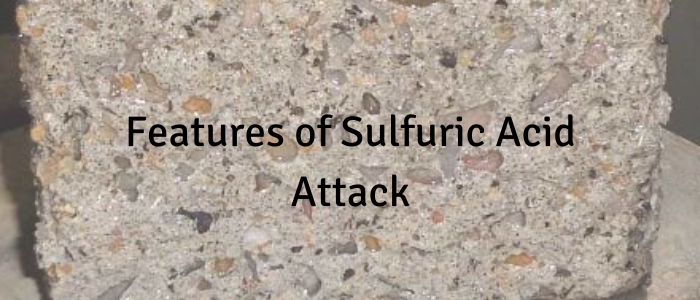Sulfuric Acid Attack
Sulfuric acid [H2(SO4)] attack on concrete may be identified by a chemical reaction between the acidic media and cement hydration products, leading to excessive formation of gypsum.
Acid attack can occur under static or flowing conditions at different temperatures and pressures in structures such as containers for liquid manure, silage, deicing agent run-off at airports as well as cooling towers and sewers.
Chemical sulfuric acid attack can originate from acid rain or chemical reactions within the concrete components.
The origin of sulfuric acid can also be categorized as ‘external’ or ‘internal’, potentially with different damage manifestations. In external attack, sulfuric acid attack was described as moist corroded concrete surface with white slimy corrosion products (sulfate salts of calcium) with corrosion debris and blisters on the surface.
Comparatively, the internal attack is mostly associated with using such aggregates in concrete (e.g. pyrrhotite-containing aggregates), causing severe deterioration (cracking) of foundations. The formed sulfuric acid reacts with the calcium-bearing phases (primarily portlandite and C-S-H) in hydrated cement paste to form gypsum and ettringite.
Read Also
